

Basic necessities of Salesforce Testing
A must-read guide for new Salesforce testers—learn testing basics, QA tips, test automation, and essential tools to start your Salesforce QA journey.
By Gurumoorthy Manickam
Lead Test Engineer
Basic Necessities of Salesforce Testing
Everybody agrees that quality is essential to a product's growth and its viability on the market. This belief applies to software and applications as well as tangible goods. Thorough software testing is one of the most frequently used approaches to improve the quality of software.
Software testing is the term used to describe a wide range of procedures and methods that are used to find and fix flaws or weaknesses in a software system. It also guarantees that the software meets predetermined standards, operates dependably, and satisfies user experience by assessing each part and feature.
What is Software Testing?
Software testing is the process of contrasting the intended and actual outcomes of a software by going over the program from beginning to end. This guarantees the software's dependability and quality. Software testing, to put it simply, compares a program's expectations and reality.
Apart from the development team, a separate Quality Assurance (QA) team is mandatory for testing the software. QA teams operate independently, offering fresh insight and attention to detail to spot possible problems that developers—those directly involved in the development of the software—might miss. The main objective of the QA team is to find and fix flaws or faults as soon as possible.
Software quality assurance testing begins with the initial phases of development and continues through all of them, including design, coding, and maintenance after the product is released. It is not a one-time event. It is an essential component of the whole SDLC (Software Development Life Cycle). As issues are identified and fixed at an early stage, this iterative process lowers the possibility of bugs being identified by the end user.
In this blog, we will delve into the fundamentals of Salesforce testing, challenges and advantages associated with this critical aspect of development.
What is Salesforce testing?
Salesforce is a popular cloud-based Customer Relationship Management (CRM), that helps businesses to manage their sales, marketing, customer service etc. Current stats reveal the usage of Salesforce by more than 82,000 companies worldwide.
Salesforce is a very complex platform that employs many integrations across different objects and components, thus supporting a wide range of businesses from small start-ups to large enterprises.
A comprehensive set of features in Salesforce contributes to an efficient and collaborative work environment, thus helping organizations streamline their processes and better serve their customers. Hence, many businesses looking to enhance their customer engagement and overall productivity choose Salesforce.
Salesforce.com, commonly referred to as SFDC, is also known by the term SFDC Testing when it comes to testing its functionalities.
The process of verifying every feature added to the Salesforce platform and making sure it doesn't negatively impact the CRM's performance is known as Salesforce testing. For each of their needs, developers and testers ought to use the Sandbox environment (Test Environment). Code that has undergone testing in the sandbox is moved from there to production.
User experience is critical to company success and will be included in Salesforce application quality assurance operations. But the main goal of salesforce testing is to make sure the apps are functioning as expected to fulfill the specifications and function flawlessly in the real world. Salesforce has emerged as a key player in the customer relationship management (CRM) space, enabling businesses to optimize their workflows.
What are the tests to be covered in Salesforce?
There are a few tests that need to be conducted in Salesforce applications, irrespective of usage. Through this section, we will get an idea of the tests that need to be performed.
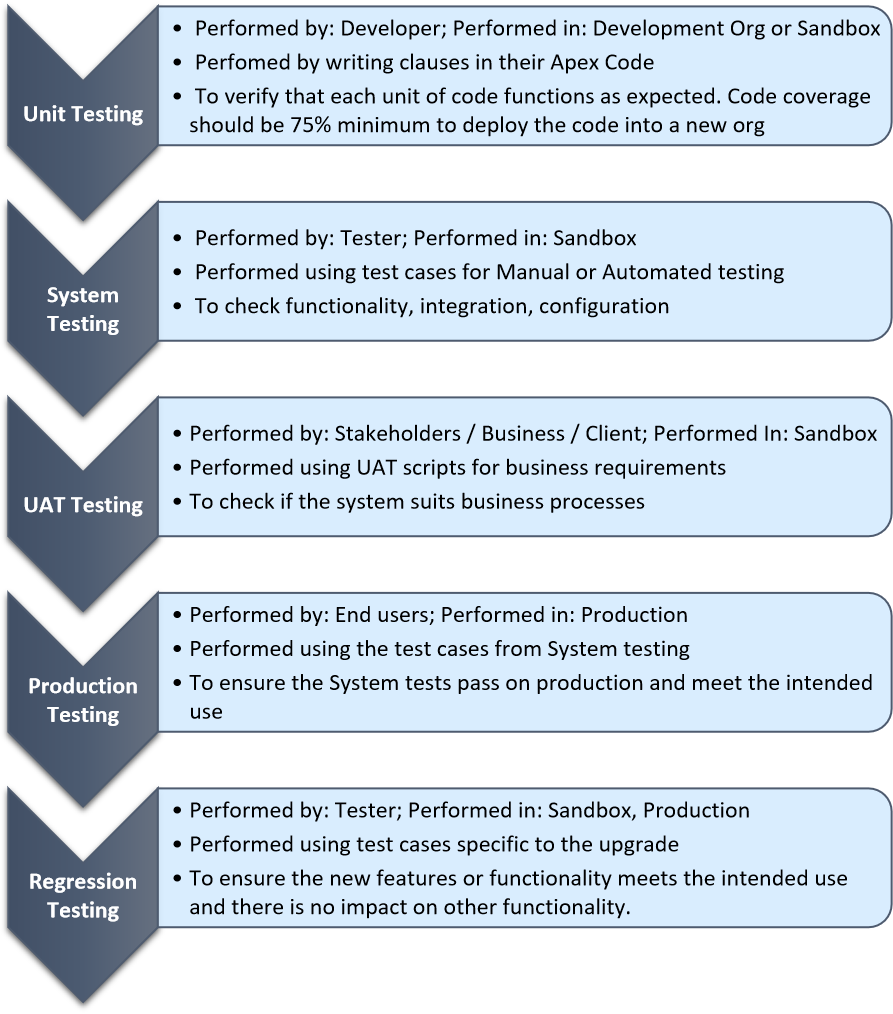
Roles and Responsibilities in Salesforce Testing
Salesforce testing plays a crucial role in ensuring the reliability, performance, and functionality of Salesforce implementations. The roles and responsibilities of individuals involved in Salesforce testing can vary based on the organization's size, structure, and specific testing processes. However, here are some common roles and responsibilities associated with Salesforce testing:
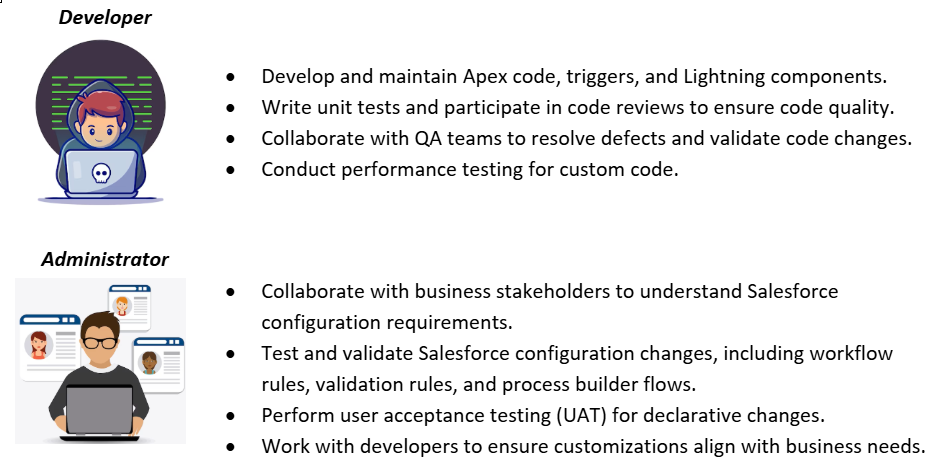
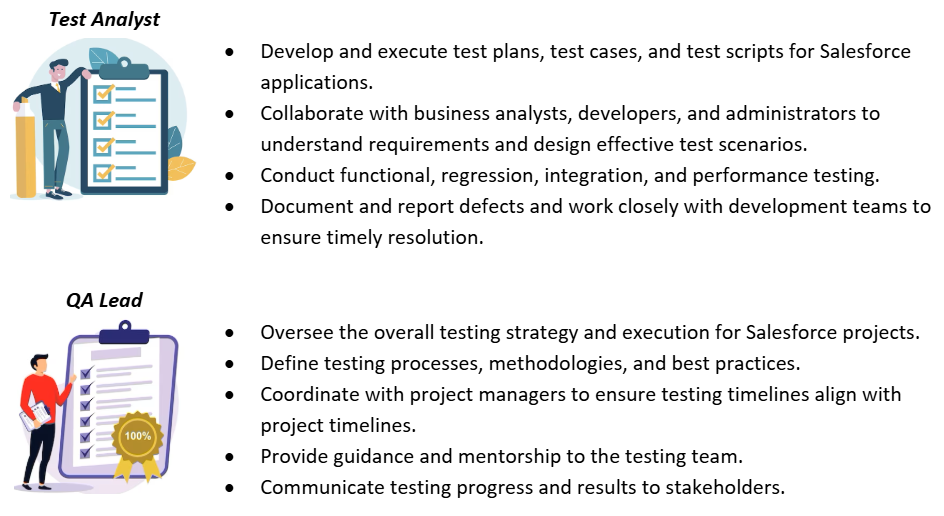
Advantages of Salesforce Testing:
Testing Salesforce applications offers numerous advantages that significantly contribute to the overall success and reliability of the Salesforce implementation. Here are key advantages of Salesforce testing:
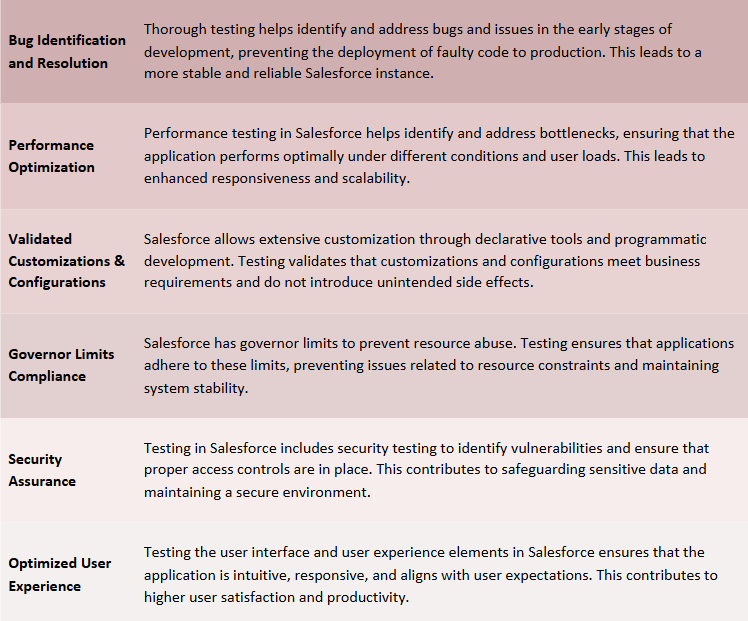

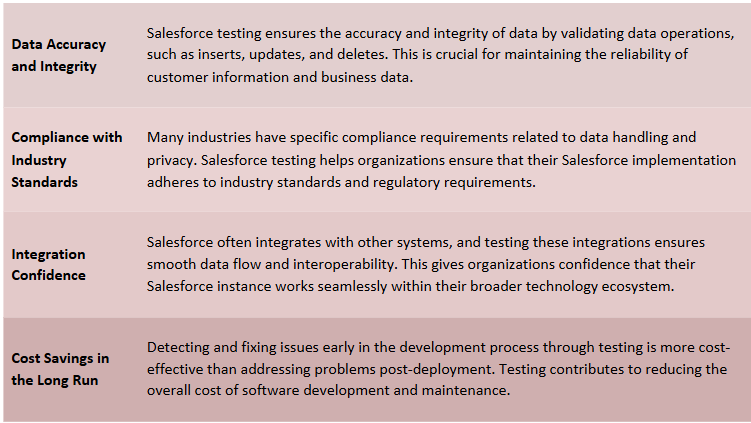
Conclusion
This blog has provided you with a fundamental understanding of Software Testing, focusing on the essentials of Salesforce testing. You've gained insights into the necessity of testing Salesforce and the specific tests that should be conducted.
In summary, Salesforce testing plays a crucial role in delivering a dependable, high-quality CRM system. By conducting thorough testing, organizations can instill confidence in their Salesforce implementations. This ensures that the platform aligns with business requirements, functions seamlessly, and provides a positive experience for its users.